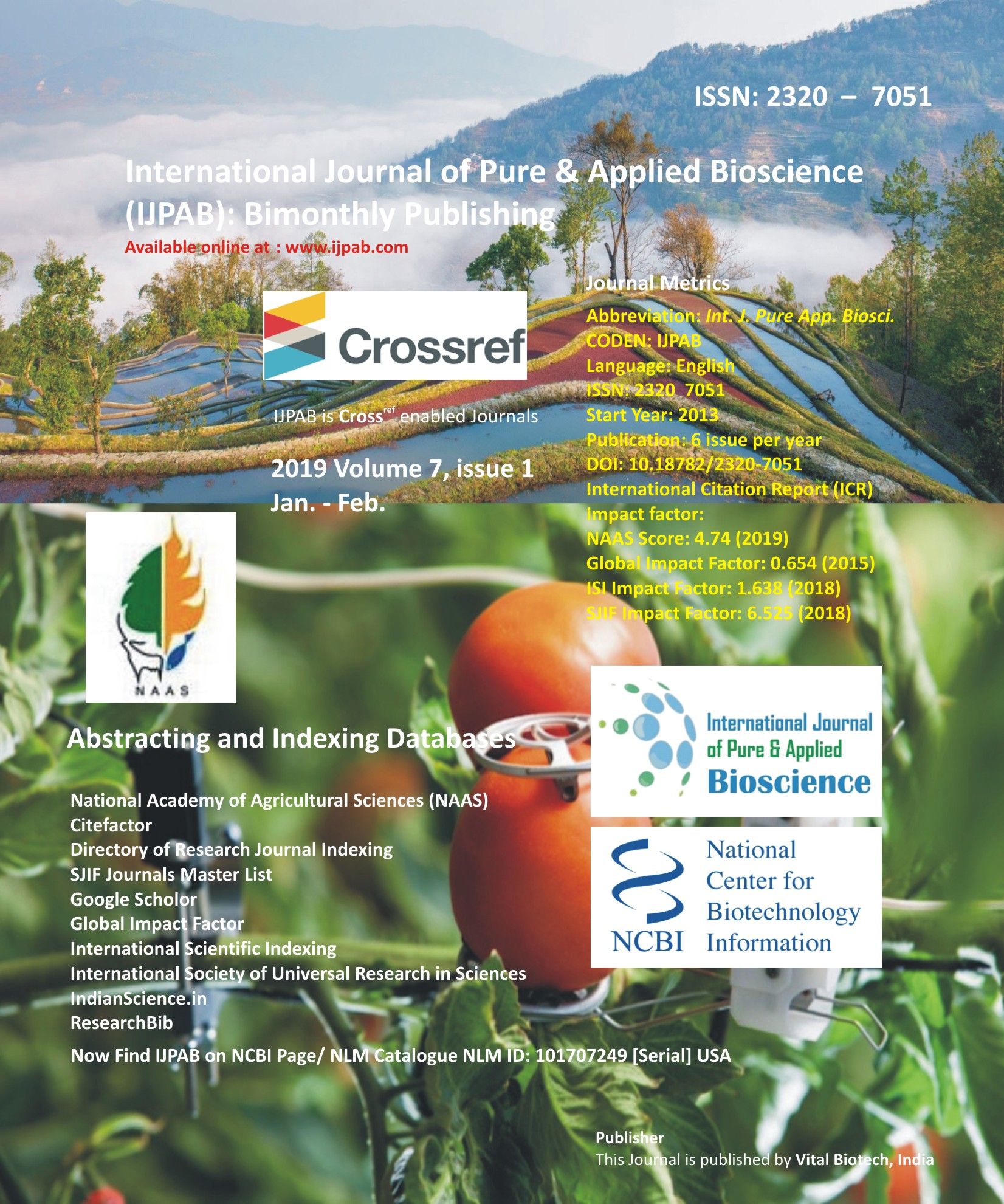
-
No. 772, Basant Vihar, Kota
Rajasthan-324009 India
-
Call Us On
+91 9784677044
-
Mail Us @
editor@ijpab.com
International Journal of Pure & Applied Bioscience (IJPAB)
Year : 2019, Volume : 7, Issue : 1
First page : (14) Last page : (21)
Article doi: : http://dx.doi.org/10.18782/2320-7051.6994
Determination of Pb, Hg, Cd, Cu, Ni and V in Periwinkle (Tympanotonus fuscatus), Crab (Callinectes pali) and Fish (Rhodeus amarus)
from Bodo River
T. F. Miikue-Yobe* and Ibara, Uwandu
Department of Science Laboratory Technology, School of Applied Sciences, Ken Saro-wiwa Polytechnic, P.M.B. 20, Bori, Rivers State, Nigeria
*Corresponding Author E-mail: miikue-yobe.togenu@kenpoly.edu.ng
Received: 22.10.2018 | Revised: 30.11.2018 | Accepted: 9.12.2018
ABSTRACT
This study was carried out to determine the concentration of Lead (Pb), Mercury (Hg), Cadmium (Cd), Vanadium, (V), copper (Cu) and Nickel (Ni) in periwinkle (Tympanotonus fuscatus), crab (collinect pali)) and fish (Rhodeus amarus) harvested from Bodo River. The samples were de-shelled and then oven dried at 800C, thereafter homogenized into powder. Two grams (2g) each of the samples were digested with 10% hydrochloric acid (HCl) and analyzed using Atomic Absorption Spectrophotometer, Model SU 71906. The result showed that the concentration of Ni in Crab, periwinkle, fish-muscle and fish-liver were 4.203±0.004ppm, 3.919±0.077ppm, 3.240±0.007ppm and 3.218±0.022ppm respectively followed by Cu in which its concentration in periwinkle, Crab, Fish-liver and Fish-muscle were 4.476±0.006ppm, 3.428±0.003ppm, 2.063±0.050ppm, and 1.56± 0.023ppm respectively. This was followed by Pb in which it concentration in crab, periwinkle, fish-liver and fish-muscle were 3.859±0.053ppm, 2.427±0.006ppm, 1.189±0.015ppm, and 0.895±0.019ppm respectively. This was followed by Cd in which it concentration in periwinkle, Crab, fish-liver and fish muscle were 0.0261±0.001ppm, 0.0176±0.001ppm, 0.017±0.000ppm, and 0.00995±0.003ppm respectively. Followed by V in which it concentration in Crab, Periwinkle, Fish-liver and Fish-liver were 0.0065±0.001ppm, 0.0049±0.002ppm, 0.0051±0.000ppm, and 0.0016±0.000ppm respectively. This was followed by Hg in which it concentration in Crab, Fish-liver, Fish-muscle and periwinkle were 0.00395±0.000ppm, 0.00295±0.000ppm, 0.0021± 0.002ppm and <0.001±0.000ppm respectively. The concentrations of the elements were more in the shellfish and the fish-liver and the lowest values were observed in fish-muscle. In all, Ni, Cu and Pb concentrations were higher than the permissible limit set by WHO, FAO, FEPA, NAFDAC, and UNEP respectively, while the values for Cd, Hg and V were found to be lower than the permissible limit set by WHO and UNEP. From this research, it therefore shows that Bodo River is polluted with heavy metals. Therefore care should be taken in the consumption of fishes from Bodo River to avoid too much exposure of these elements. And also more research should be carried out on bio-remediation of heavy metals in aquatic environment.
Key words: Pollution, Heavy metals; bioaccumulation; Aquatic environment, Human being, Toxicity.
Full Text : PDF; Journal doi : http://dx.doi.org/10.18782
Cite this article: Miikue-Yobe, T.F. and Ibara, Uwandu, Determination of Pb, Hg, Cd, Cu, Ni and V in Periwinkle (Tympanotonus Fuscatus), Crab (Callinectes Pali) and Fish (Rhodeus Amarus) from Bodo River., Int. J. Pure App. Biosci.7(1): 14-21 (2019). doi: http://dx.doi.org/10.18782/2320-7051.6994

